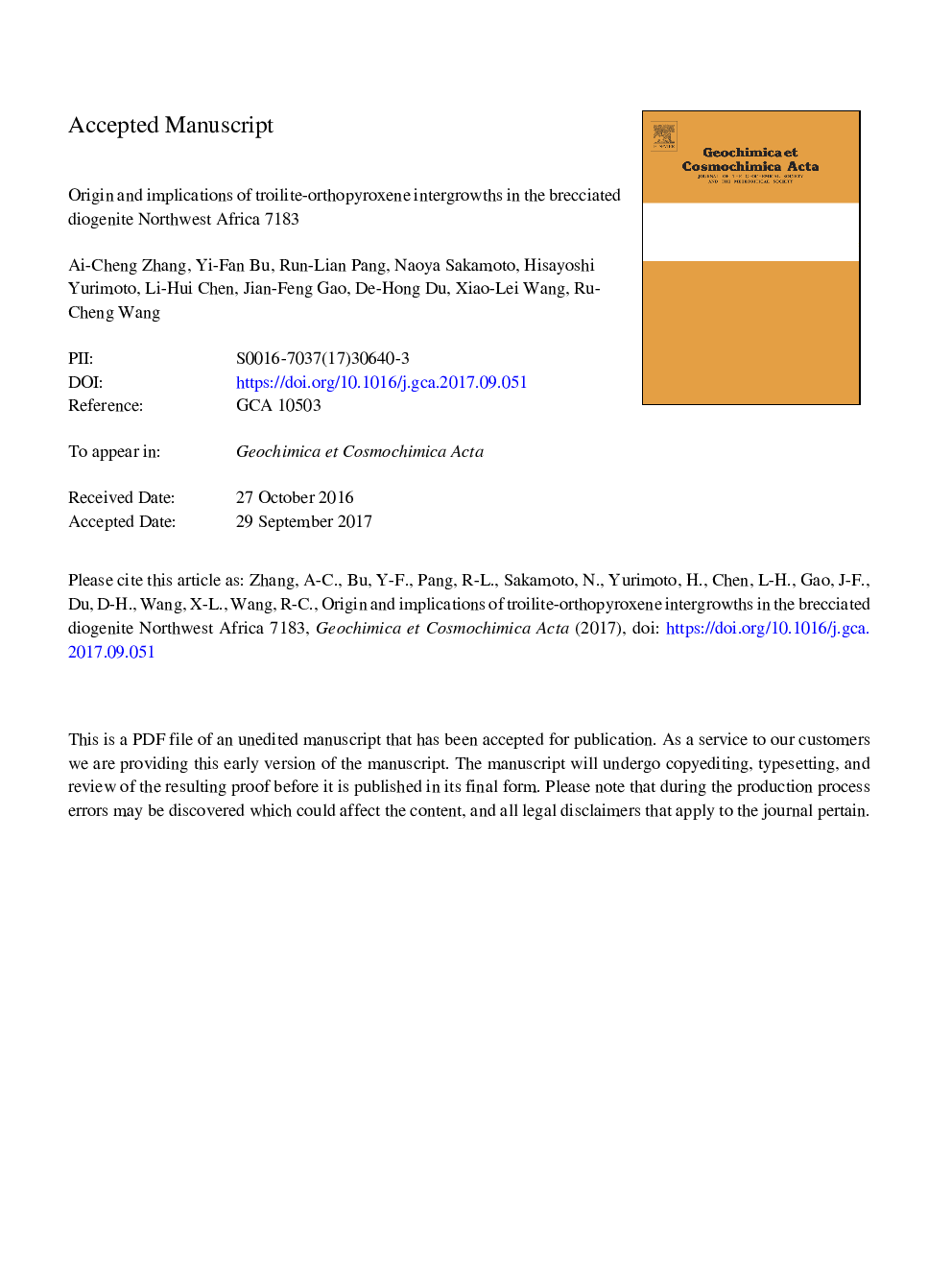| Article ID | Journal | Published Year | Pages | File Type |
|---|---|---|---|---|
| 8911011 | Geochimica et Cosmochimica Acta | 2018 | 60 Pages |
Abstract
Two groups of troilite-orthopyroxene intergrowths with various grain sizes and mineral chemistry have been observed in NWA 7183. One group of intergrowths contains fine-grained (<5â¯Î¼m) olivine and chromite as inclusions in orthopyroxene (10-20â¯Î¼m in size). The other group, in which orthopyroxene is more fine-grained (<10â¯Î¼m in size), is closely associated with coarse irregular olivine grains. The orthopyroxene grains in both groups of troilite-orthopyroxene intergrowths are depleted in Cr, Al, Ti, and Ca compared with diogenitic orthopyroxene. Based on the texture and mineral chemistry, we suggest that the two groups of troilite-orthopyroxene intergrowths formed via reactions between diogenitic olivine and S-rich vapors, probably at different temperatures. The fact that some of the intergrowths are included in diogenitic lithic clasts indicates that the formation of the host diogenite should postdate the formation of the majority of troilite-orthopyroxene intergrowths. This relationship further implies that not all of the diogenites are cumulates that directly crystallized from the Vestan magma ocean. Instead, they probably originated from partial melting and recrystallization of magma ocean cumulates. The replacement of olivine by troilite and orthopyroxene intergrowths can partly explain why the expected olivine-rich lithologies were not detected at the two south pole impact basins on Vesta.
Related Topics
Physical Sciences and Engineering
Earth and Planetary Sciences
Geochemistry and Petrology
Authors
Ai-Cheng Zhang, Yi-Fan Bu, Run-Lian Pang, Naoya Sakamoto, Hisayoshi Yurimoto, Li-Hui Chen, Jian-Feng Gao, De-Hong Du, Xiao-Lei Wang, Ru-Cheng Wang,
